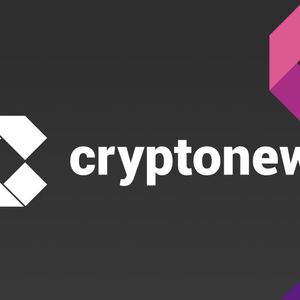Bitcoin Mining Giant Riot Platforms Achieves Stunning Q2 Profit Amidst Rising Costs
8 min read
BitcoinWorld Bitcoin Mining Giant Riot Platforms Achieves Stunning Q2 Profit Amidst Rising Costs The world of cryptocurrency is a fascinating blend of innovation, volatility, and significant financial plays. Few companies embody this dynamic landscape quite like Riot Platforms (NASDAQ: RIOT), a prominent player in the Bitcoin mining sector. Recently, the company turned heads with its Q2 financial report, revealing a stunning $219.5 million net income. This impressive rebound from a previous loss has sparked considerable discussion across the digital asset community. But what exactly drove this dramatic shift, especially when the underlying costs of Bitcoin mining are on a significant upward trend? Let’s delve into the intricate details of Riot’s performance and explore the broader implications for the future of digital gold. Understanding Riot Platforms’ Remarkable Q2 Performance in Bitcoin Mining Riot Platforms’ Q2 2023 financial results present a compelling narrative of strategic positioning and market dynamics. The reported net income of $219.5 million marks a significant turnaround from the $296.4 million net loss experienced in Q1. This dramatic swing wasn’t primarily due to a massive increase in operational mining profits but rather a powerful accounting mechanism: an unrealized gain on its substantial Bitcoin holdings. Imagine holding a valuable asset that suddenly appreciates significantly in market value – that’s precisely what happened for Riot with its Bitcoin reserves. Specifically, a staggering $470.8 million unrealized gain on its Bitcoin holdings was the primary catalyst for this financial rebound. It’s crucial to understand the distinction here: an “unrealized gain” means the company hasn’t sold the Bitcoin yet. The profit exists on paper, reflecting the increased market value of their assets. While this is a positive indicator of asset appreciation, it doesn’t represent cash flow from operations directly. This nuance is vital for investors to grasp, as it highlights the company’s dual role as both a Bitcoin mining operator and a significant holder of the asset itself. Despite this impressive quarterly profit, the year-to-date net loss for Riot Platforms still stands at $76.9 million. This figure provides a more holistic view of their financial journey throughout the year, indicating that while Q2 was strong, the earlier part of the year presented significant challenges. This underlines the inherent volatility and capital-intensive nature of the Bitcoin mining industry, where profitability can fluctuate wildly based on market prices, energy costs, and mining difficulty. The Double-Edged Sword: Rising Bitcoin Mining Costs While the Q2 profit is certainly headline-grabbing, a critical detail often overshadowed is the substantial increase in Bitcoin mining costs. Riot Platforms reported a staggering 93% year-over-year rise in these operational expenses. This isn’t just a minor blip; it’s a significant indicator of the increasing pressures faced by miners across the globe. What factors contribute to such a dramatic surge in costs? Several key elements are at play: Energy Prices: Bitcoin mining is an energy-intensive process. As global energy markets have seen volatility, particularly with rising electricity prices, the operational costs for miners like Riot have directly escalated. Network Difficulty: The Bitcoin network adjusts its mining difficulty approximately every two weeks. As more miners join and more powerful hardware comes online, the difficulty increases. This means miners need to expend more computational power to find a block and earn Bitcoin, effectively increasing the cost per Bitcoin mined. Hardware Upgrades and Maintenance: To remain competitive, miners must constantly invest in the latest, most efficient mining hardware (ASICs). These machines are expensive, and their maintenance and eventual replacement contribute significantly to overall costs. Infrastructure and Personnel: Beyond the direct mining operation, companies like Riot also incur costs for maintaining their large-scale data centers, cooling systems, security, and a growing team of engineers and operational staff. To illustrate the impact, consider a simplified breakdown of typical Bitcoin mining costs: Cost Category Description Impact on Profitability Electricity Primary operational expense for mining rigs and cooling. Directly correlated with energy market prices; higher prices squeeze margins. Hardware Depreciation/Upgrades Cost of acquiring and maintaining ASICs. Significant capital expenditure; efficiency gains are crucial. Hosting/Infrastructure Data center space, cooling, internet, security. Fixed and variable costs; scales with mining capacity. Personnel Salaries for engineers, technicians, management. Essential for large-scale operations. The 93% year-over-year increase in mining costs for Riot Platforms underscores a critical challenge for the industry: how to maintain profitability and scale operations when the core expense is escalating so rapidly. This forces miners to become even more efficient, seek out the cheapest energy sources, and constantly innovate their operations. What Does Riot Platforms’ Impressive Bitcoin Mining Holdings Mean for Its Strategy? Beyond the financial figures, Riot Platforms’ strategy of accumulating and holding mined Bitcoin is a key aspect of its business model. The company reported mining 1,426 BTC in Q2, contributing to a substantial total of 19,273 BTC held as of the reporting period. This strategy positions Riot not just as a miner, but as a significant holder of digital assets, essentially making it a proxy for Bitcoin itself to some extent. Why do miners choose to “HODL” (hold on for dear life) their mined Bitcoin instead of selling it immediately to cover costs? There are several reasons: Long-Term Bullish Outlook: Many miners, including Riot, have a strong conviction in Bitcoin’s long-term value appreciation. By holding their mined coins, they aim to capitalize on future price increases. Balance Sheet Strength: A large reserve of Bitcoin can significantly strengthen a company’s balance sheet, providing a valuable asset base. Market Timing: Selling mined Bitcoin strategically when prices are high can maximize revenue, though this carries market timing risk. The decision to hold nearly 20,000 BTC means that Riot Platforms’ financial performance will continue to be heavily influenced by Bitcoin’s price movements. A significant rise in Bitcoin’s value can turn unrealized gains into massive profits, while a sharp decline can lead to substantial paper losses, as seen in their Q1 results. This strategy, while potentially lucrative, adds another layer of market risk to their operational business. Navigating the Volatile World of Bitcoin Mining : Challenges and Opportunities Riot Platforms’ Q2 report is a microcosm of the broader Bitcoin mining industry – an industry characterized by high stakes, rapid evolution, and significant external pressures. Beyond the immediate financial figures, several overarching themes define this sector: Energy Consumption and Sustainability: The environmental impact of Bitcoin mining remains a hot topic. As miners scale, their energy footprint grows, leading to calls for more sustainable practices and the use of renewable energy sources. Regulatory Scrutiny: Governments worldwide are increasingly looking at how to regulate the crypto industry, including mining. Potential regulations around energy consumption, emissions, or even the classification of Bitcoin as a security could impact mining operations significantly. Hashrate Wars and Competition: The Bitcoin mining landscape is fiercely competitive. New entrants, technological advancements, and the constant race for more efficient hardware mean that miners must continually innovate to maintain their market share and profitability. Market Cycles: The crypto market operates in distinct bull and bear cycles. Miners thrive during bull markets when Bitcoin prices are high, making operations more profitable. Bear markets, however, can be brutal, pushing less capitalized miners out of business. Despite these challenges, opportunities abound. The continued global adoption of Bitcoin, the increasing efficiency of mining hardware, and the potential for innovative energy solutions (like utilizing flare gas or stranded energy) present pathways for sustained growth. Companies that can strategically manage their energy costs, upgrade their infrastructure efficiently, and adapt to regulatory changes are best positioned for long-term success in this dynamic sector. What Can Investors Learn from Riot Platforms’ Bitcoin Mining Performance? For investors eyeing the Bitcoin mining space, Riot Platforms’ recent report offers several actionable insights: Understand Unrealized Gains: Distinguish between operational profits and gains from asset appreciation. While both contribute to net income, only the former reflects the core mining business’s direct profitability. Monitor Energy Costs: Energy is the largest variable cost for miners. Keep an eye on global energy prices and a company’s energy strategy. Assess BTC Holdings Strategy: A company’s decision to hold or sell mined Bitcoin significantly impacts its balance sheet and exposure to Bitcoin price volatility. Evaluate Efficiency: Look at metrics like hash rate per joule or cost per Bitcoin mined to gauge operational efficiency compared to peers. Consider Market Cycles: Bitcoin mining stocks are highly leveraged plays on Bitcoin’s price. They can offer amplified gains during bull runs but also amplified losses during downturns. Conclusion: A Resilient Path in Bitcoin Mining Riot Platforms’ Q2 performance is a testament to the complex, yet often rewarding, world of Bitcoin mining . The company’s impressive rebound, largely driven by the appreciation of its Bitcoin holdings, showcases the strategic value of accumulating digital assets. However, the concurrent rise in mining costs highlights the relentless operational pressures and the constant need for efficiency and innovation within the industry. As the crypto landscape continues to evolve, companies like Riot Platforms will remain at the forefront, navigating market volatility, technological advancements, and the ever-present challenge of sustainable growth. Their journey offers valuable lessons for anyone seeking to understand the intricate dance between digital assets, energy, and corporate strategy. Frequently Asked Questions (FAQs) About Bitcoin Mining and Riot Platforms Q1: What is an “unrealized gain” and how did it impact Riot Platforms’ Q2 profit? An unrealized gain is an increase in the value of an asset (like Bitcoin) that a company holds but has not yet sold. For Riot Platforms, a $470.8 million unrealized gain on its Bitcoin holdings significantly boosted its Q2 net income on paper, reflecting asset appreciation. Q2: Why are Bitcoin mining costs rising so significantly? Bitcoin mining costs are rising primarily due to increased global energy prices, the escalating difficulty of the Bitcoin network (requiring more computational power), and the continuous need to invest in expensive, more efficient mining hardware. Q3: Does Riot Platforms sell all the Bitcoin it mines? No, Riot Platforms employs a “HODL” strategy, retaining a significant portion of the Bitcoin they mine. As of Q2, they held 19,273 BTC, aiming to benefit from future Bitcoin price appreciation. Q4: How does Riot Platforms manage the volatility of the Bitcoin market? Riot manages volatility through its strategic Bitcoin holdings, aiming for long-term appreciation. Their financial results directly reflect Bitcoin’s price movements, and they focus on operational efficiency to mitigate the impact of rising costs. Q5: What are the main challenges facing the Bitcoin mining industry today? Key challenges include managing escalating energy costs, addressing environmental sustainability concerns, navigating evolving regulatory landscapes, and staying competitive in a rapidly advancing technological environment with increasing network difficulty. Q6: Is investing in Bitcoin mining companies a good idea for all investors? Investing in Bitcoin mining companies can be highly volatile and is generally considered suitable for investors with a high-risk tolerance. These companies are often leveraged plays on Bitcoin’s price and are subject to significant operational risks like energy price fluctuations and regulatory changes. Share Your Insights! Did Riot Platforms’ Q2 results surprise you? What are your thoughts on the rising costs of Bitcoin mining ? Share this article on your social media channels and join the conversation! Your insights help enrich our community’s understanding of the dynamic crypto world. To learn more about the latest Bitcoin mining trends, explore our article on key developments shaping Bitcoin price action . This post Bitcoin Mining Giant Riot Platforms Achieves Stunning Q2 Profit Amidst Rising Costs first appeared on BitcoinWorld and is written by Editorial Team

Source: Bitcoin World



